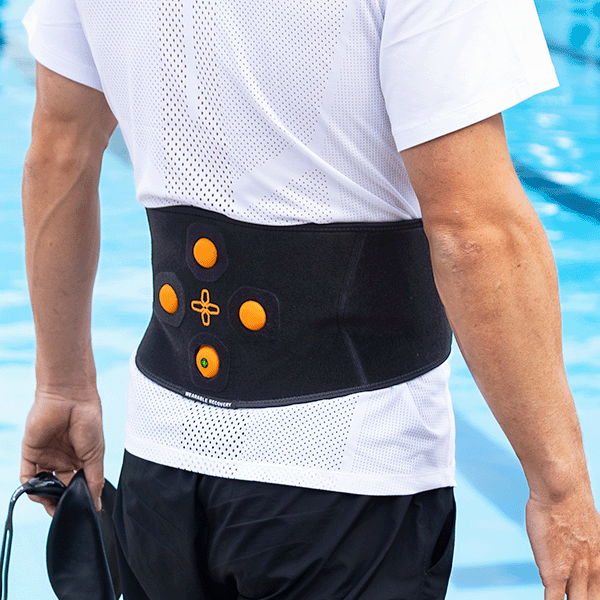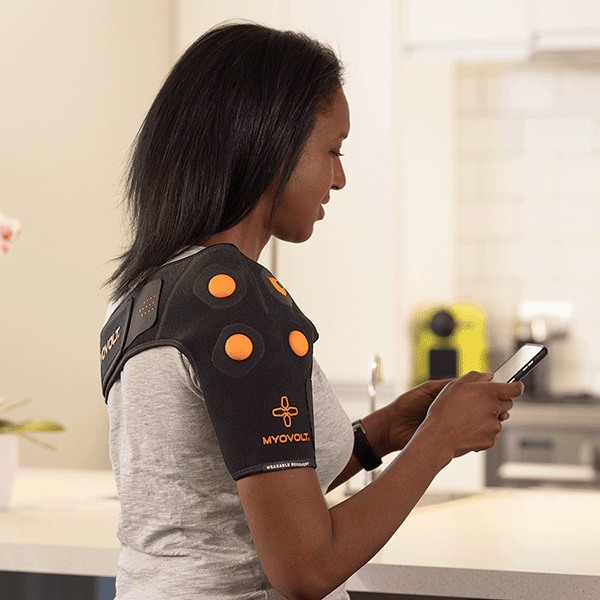Myovolt on the world rowing stage.
The biggest sporting event in the world, with the best recovery tool in tow.
Rowing is no small task, let alone at the Olympic level. The boats are long and heavy, the training rough, the mornings early. In races, athletes will power through two kilometers of open water, racing against both other boats and their own exhaustion. It’s one of the hardest sports in the world, and takes a high level of cardio and the fortitude of a steel beam.
Competing at both the World Rowing Championships, the European Rowing Championships and especially the Tokyo Olympics, New Zealand showed why their rowing program is the best in the world, bringing home three golds and two silvers.
Dr. Stuart Armstrong, the medical director of Rowing New Zealand for the past five years, has seen firsthand how well-suited New Zealanders are for rowing.
“It's a sport that seems to suit New Zealand's psyche very well. Our athletes and people in New Zealand don't mind getting up at five in the morning, going down to the lake and training hard. And you do have to train hard to be a good rowing athlete.”
What makes it so tough?
“To be honest? I think a lot of it is the distance. I don't know if you've ever tried to row two kilometers as hard as you can. But it's a really difficult distance. It's not a sprint, but it's not endurance. It's a really hard distance to judge - to not go too hard to crash and just suffer for the last 500 metres.”
Every race is two kilometers. Not a sprint, not a marathon. A devilish middle ground that can break the spirit of any athlete. But it’s not just about the two kilometers. New Zealand has their rowers out on the water a lot, racking up kilometers.
“In New Zealand we do volume training. So our athletes are expected to be out on the water or on the erg (rowing machine) for about 180 to 200 kilometers a week. About 15 to 20 kilometers a session. Generally, we’ll hit the water twice a day, three to four times a week.”
Managing fatigue with such a workload is important for New Zealand Rowing. Stuart says it’s all about recovery.
“The biggest thing is recovery. Making sure they have excellent nutrition, that they’re recovering and actually resting outside of rowing. We also use massage and other tools to prevent musculoskeletal injuries.”
Myovolt on the world rowing stage.
The biggest sporting event in the world, with the best recovery tool in tow.
Rowing is no small task, let alone at the Olympic level. The boats are long and heavy, the training rough, the mornings early. In races, athletes will power through two kilometers of open water, racing against both other boats and their own exhaustion. It’s one of the hardest sports in the world, and takes a high level of cardio and the fortitude of a steel beam.
Competing at both the World Rowing Championships, the European Rowing Championships and especially the Tokyo Olympics, New Zealand showed why their rowing program is the best in the world, bringing home three golds and two silvers.
Dr. Stuart Armstrong, the medical director of Rowing New Zealand for the past five years, has seen firsthand how well-suited New Zealanders are for rowing.
“It's a sport that seems to suit New Zealand's psyche very well. Our athletes and people in New Zealand don't mind getting up at five in the morning, going down to the lake and training hard. And you do have to train hard to be a good rowing athlete.”
What makes it so tough?
“To be honest? I think a lot of it is the distance. I don't know if you've ever tried to row two kilometers as hard as you can. But it's a really difficult distance. It's not a sprint, but it's not endurance. It's a really hard distance to judge - to not go too hard to crash and just suffer for the last 500 metres.”
Every race is two kilometers. Not a sprint, not a marathon. A devilish middle ground that can break the spirit of any athlete. But it’s not just about the two kilometers. New Zealand has their rowers out on the water a lot, racking up kilometers.
“In New Zealand we do volume training. So our athletes are expected to be out on the water or on the erg (rowing machine) for about 180 to 200 kilometers a week. About 15 to 20 kilometers a session. Generally, we’ll hit the water twice a day, three to four times a week.”
Managing fatigue with such a workload is important for New Zealand Rowing. Stuart says it’s all about recovery.
“The biggest thing is recovery. Making sure they have excellent nutrition, that they’re recovering and actually resting outside of rowing. We also use massage and other tools to prevent musculoskeletal injuries.”
Myovolt - The hidden crewmate.
Myovolt was one of the tools the rowing team brought to Tokyo and Europe. The focal vibration product is extremely helpful for athletes looking to minimize pain and fatigue and maximize recovery. Stuart sings Myovolt’s praises.
“We use Myovolt a lot to give the athlete something that they can use when they've got post-exertion soreness or they've got a niggle here and there. They use Myovolt to help settle that down. It also helps with recovery. We use it partially as a massage, partially as a physiotherapy injury prevention tool.”
Myovolt also helped when the men’s eight rowing crew needed to fly to a tournament for a last-minute qualification for the Olympics. Without the team’s trainers, physiotherapists, and masseuses, Myovolt stepped up. Its hands-free, portable, and easy-to-use design was a godsend and the eight came back with a win and continued on to win a gold medal.
“The general report from the athletes is very positive. The big thing that they liked was the convenience. You can have a massage while you're in your car, driving to training, driving back from training, when you're sitting on the couch. The big benefit is convenience, that you can use it anywhere. And it did seem to give them good pain relief, especially with the back and shoulder niggles.”
If the time spent on a rowing machine has your back aching, and your shoulder worse for wear, don’t stress. Head to the shop and pick up Myovolt, the clinically proven treatment for shoulder and lower back pain.
If you’re looking for a story on another world beating champion enjoying using Myovolt, check out track cyclist Holly Edmonston’s story here.
Myovolt - The hidden crewmate.
Myovolt was one of the tools the rowing team brought to Tokyo and Europe. The focal vibration product is extremely helpful for athletes looking to minimize pain and fatigue and maximize recovery. Stuart sings Myovolt’s praises.
“We use Myovolt a lot to give the athlete something that they can use when they've got post-exertion soreness or they've got a niggle here and there. They use Myovolt to help settle that down. It also helps with recovery. We use it partially as a massage, partially as a physiotherapy injury prevention tool.”
Myovolt also helped when the men’s eight rowing crew needed to fly to a tournament for a last-minute qualification for the Olympics. Without the team’s trainers, physiotherapists, and masseuses, Myovolt stepped up. Its hands-free, portable, and easy-to-use design was a godsend and the eight came back with a win and continued on to win a gold medal.
“The general report from the athletes is very positive. The big thing that they liked was the convenience. You can have a massage while you're in your car, driving to training, driving back from training, when you're sitting on the couch. The big benefit is convenience, that you can use it anywhere. And it did seem to give them good pain relief, especially with the back and shoulder niggles.”
If the time spent on a rowing machine has your back aching, and your shoulder worse for wear, don’t stress. Head to the shop and pick up Myovolt, the clinically proven treatment for shoulder and lower back pain.
If you’re looking for a story on another world beating champion enjoying using Myovolt, check out track cyclist Holly Edmonston’s story here.
Featured in this story
Myovolt Shoulder fits comfortably around the left or right shoulder and upper arm area to deliver a 10-minute focal vibration treatment at the press of a switch. The neoprene shoulder brace has an adjustable fit.
Featured in story
Myovolt Shoulder fits comfortably around the left or right shoulder and upper arm area to deliver a 10-minute focal vibration.



